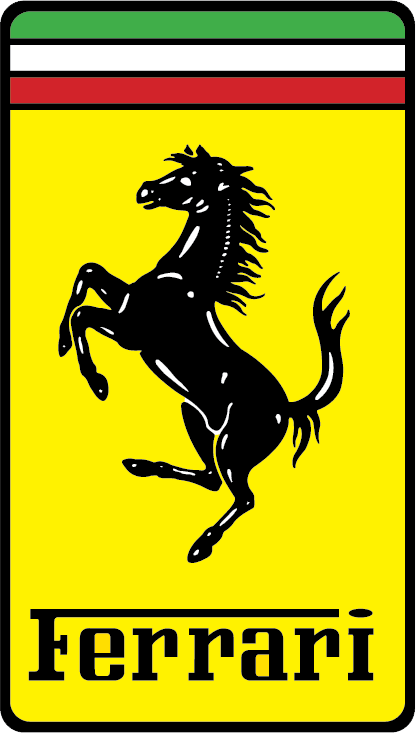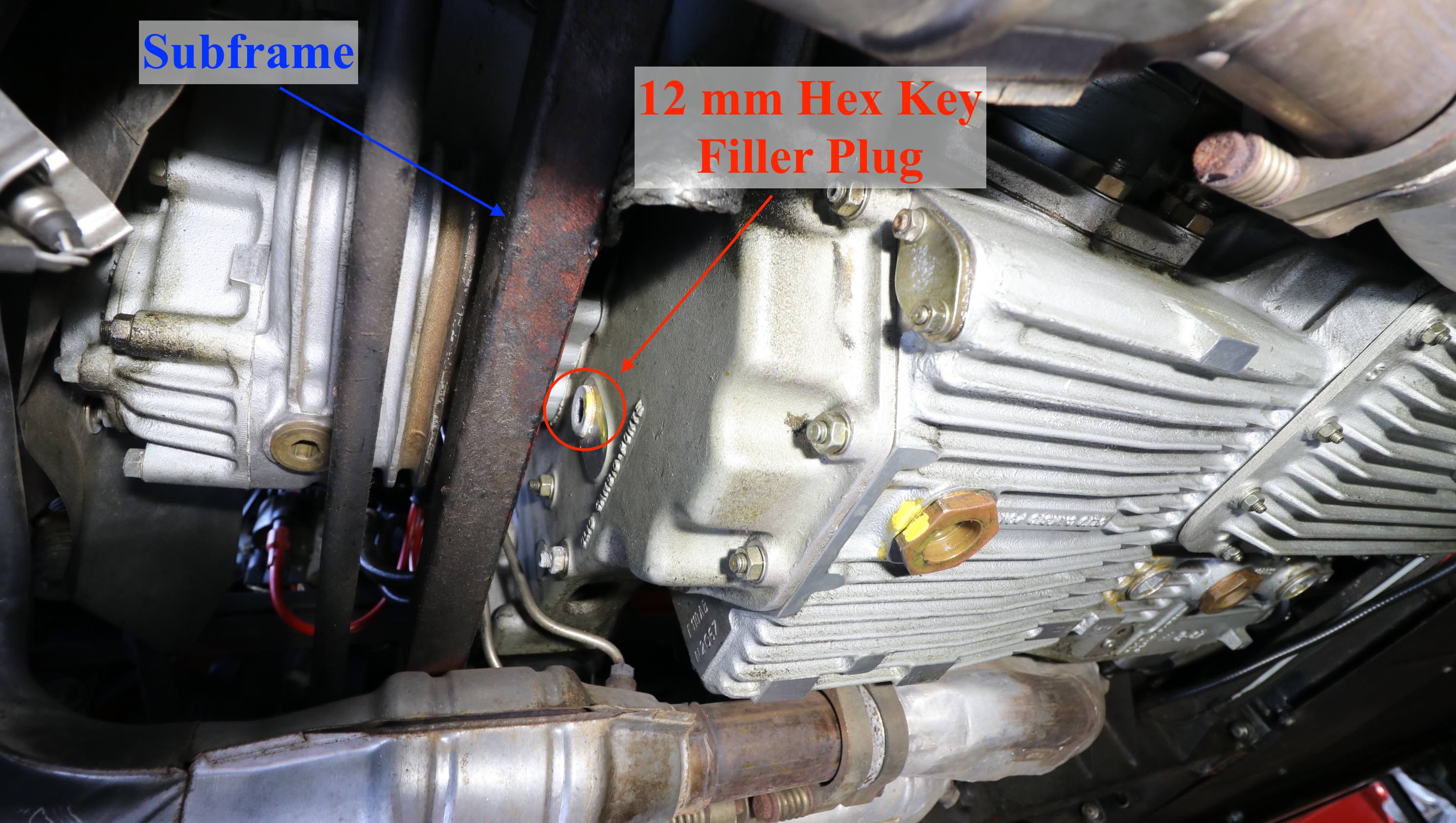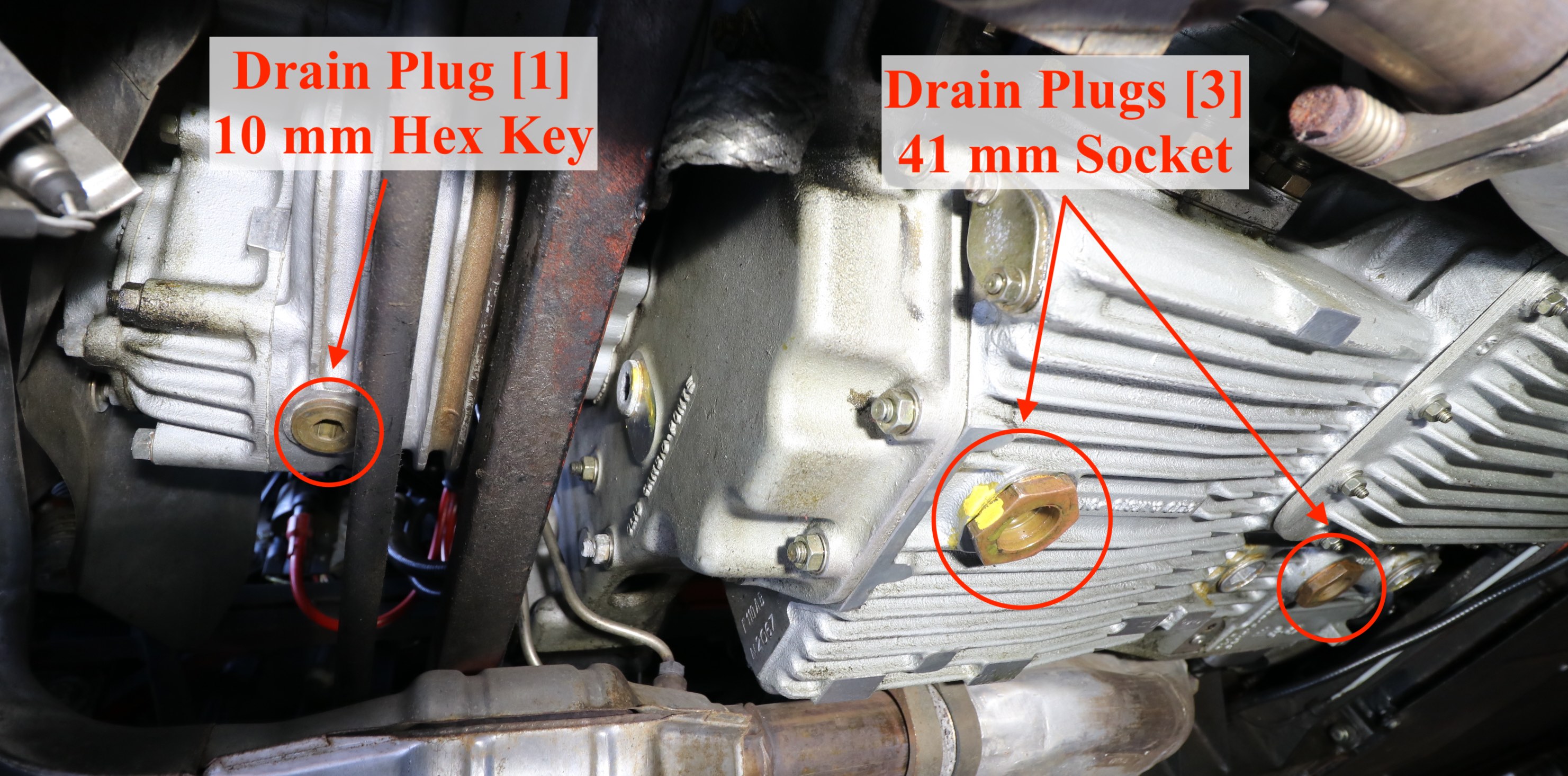Overview
This guide goes through the steps we used to perform a gearbox oil change on a 1987 Ferrari Testarossa. It is definitely helpful to have the car lifted enough such that you can get under the middle of the car to reach the drain plugs on the bottom of the pan. Before draining any oil, we opened the two filler plugs - just in case they were seized or if some other issue occurred we wouldn't be stuck with an immobile car. If you have never changed differential oil before, beware that it does contain sulfur which smells quite bad. Having roughly 9L of oil definitely smells bad - it is normal. Before starting, it should be noted that you will need to either have a special 12 mm hex key or modify a 12 mm hex key to be able to fit in the tight space to undue the filler plug. The details of how we modified the 12 mm hex key is shown in step one.
Parts Used
| Part | Quantity | Part No. | Links to ones we used |
|---|---|---|---|
| Drain Plug Crush Washers | 2 | Ferrai #10265160 | Ricambi |
| Small Drain Plug Crush Washer1 | 1 | Ferrari #10261860 (old #10263460) | Ricambi |
| Limited Slip Additive2 | 1-4 oz | Amazon | |
| Oil3 | ~9.5L | Mobil-1 75w-90 OR Royal Purple-1 75w-90 | |
1 This is a copper crush washer. We use these automotive self-centered bonded seal/gasket washers that work like copper crush washers, but do not require to be tightened as much.
2 We added some limited slip additive to insure there is no undue stress or extra friction put on the differential given the known issues on the Testarossa. Our experience is that this has worked well, with smooth shifting and excellent corner feel (no skipping, jitters, etc.). The differential on the Testarossa is a highly debated topic with many opinions...
3 We use and have good results with Mobil-1 75w-90.
Tools Used
| Tool | Link |
|---|---|
| Quick Jack BL-5000XL portable lift | Amazon |
| Jack Stands | Amazon |
| Large Oil Pan | Amazon |
| Funnel | Amazon |
| Funnel Hose | Amazon |
| 12 mm Hex Key (Modified) 5 | Sears |
| 10 mm Hex Key Socket, 3/8" Drive | Amazon |
| 41 mm 6-Point Socket, 3/4" Drive | Amazon |
| 12 mm 6-Point Socket, 1/2" Drive4 | Amazon |
| 1/2" Drive Extension | Amazon |
| 1/2" Drive Ratchet | Amazon |
| 1/2" Drive Torque Wrench | Amazon |
| 1/2" Female to 3/4" Male Drive Adapter | Amazon |
| 3/4" Drive Breaker Bar | Amazon |
| 3/4" Drive Ratchet | Amazon |











